| |
|
|
|
|
|
|
|
|
|
|
| |
| |
 |
|
| |
田润德
编译文/图 2020-04-18
20:36 |
|
| |
|
|
|
|
| |
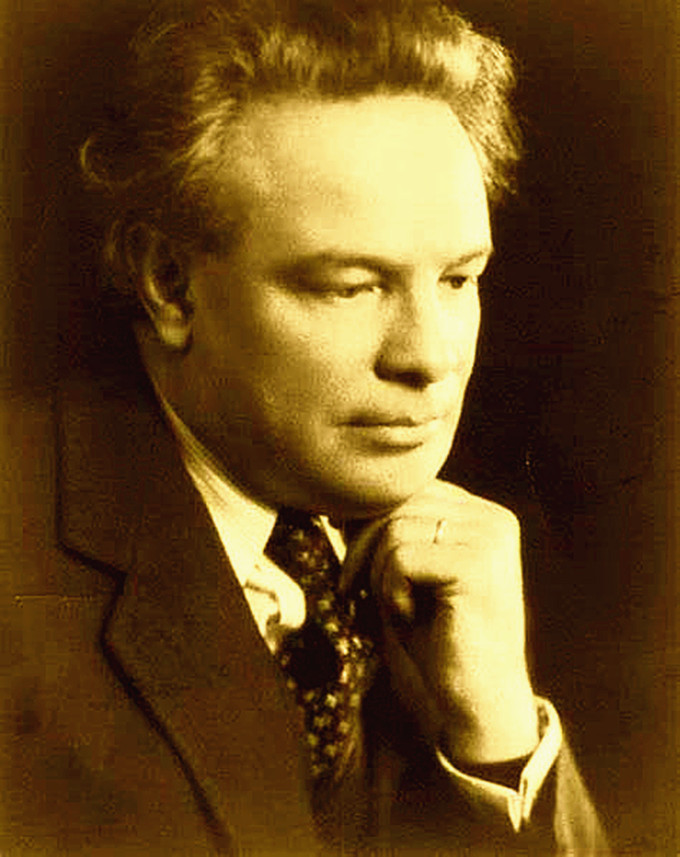 |
|
|
|
| |
奥托里诺·雷斯皮基(Ottorino
Respighi 1879-1936) |
|
|
|
| |
|
|
|
|
| |
阿尔贝纳·达纳洛娃演奏雷斯皮基《格雷戈里亚诺协奏曲》
|
|
|
|
| |
Ottorino Respighi - Concerto gregoriano
|
|
|
|
| |
NHK Symphony Orchestra
Albena Danailova, violin
Jesús López Cobos, conductor
@Suntory Hall, Tokyo, Japan (2017.1.18)
NHK交响乐团
Albena Danailova,小提琴
指挥,耶稣·洛佩兹·科沃斯
@Suntory Hall,日本东京(2017.1.18) |
|
|
|
| |
|
|
|
|
| |
音乐历史上的今天
1936年4月18日,56岁的雷斯庇基(Ottorion Respighi)在罗马因癌症过世,他以罗马的松林为主题创作的管弦乐作品远近闻名。
奥托里诺·雷斯庇基(Ottorion Respighi
1879-1936
)是意大利器乐演奏家和作曲家。1879年7月9日,他出生在波伦亚。雷斯庇基的音乐天才是直接从父亲那里继承下来的,父亲不仅擅长演奏钢琴,而且从他幼年时就亲自给他上音乐课。1891年,雷斯庇基进波伦亚音乐学校学习小提琴和中提琴,在那里一呆就是8年。毕业后,他来到俄国,师从俄罗斯音乐大师里姆斯基一柯萨科夫学习作曲与配器。离开彼得堡以后,雷斯庇基又到了柏林,当时欧洲的艺术之都。他在那里感受到浓郁的文化氛围,音乐水平又有了很大的提高。起初他在这些地方主要进行提琴和钢琴演奏。渐渐地,他也开始尝试作曲。他的《钢琴协奏曲》、歌剧《安佐王》和《赛米拉玛》等作品奠定了他作为优秀作曲家的声誉。
1913年,雷斯庇基迁居罗马,他在那里一直住到1936年4月18日逝世。
雷斯庇基在罗马受聘为圣西西利音乐学校作曲教授,1924年又担任院长,但两年后辞职,只担任作曲教授。雷斯庇基定居罗马时期是他创作的鼎盛时期,他的一此最优秀的具有代表性的交响乐作品,就是在这一时期完成的。这些作品是作曲家受到美丽而具有光荣历史的古老城市——罗马的启发与感悟而创作的,它们从不同的角度,栩栩如生地描绘出一幅幅有关罗马的风俗画面。
雷斯庇基的音乐创作摒弃了意大利古典歌剧的一些进步原则,而追求”纯器乐主义”;他力求在音乐形式上复古,并刻意模仿中古时代的旋律和调式、体裁。他不愿像当代的许多作曲家那样与过去割裂。他的大部分作品,包括他自己给予极高评价的那些作品,都是扎根于过去的土壤。
雷斯庇基的创作形式是多种多样的,除了他那些著名的交响诗外,还有八部歌剧,两部芭蕾舞剧和一些协奏曲、组曲等管弦乐作品,其中以管弦乐组曲《乌》最为出名。雷斯庇基还写过不少声乐作品和室内乐作品,此外,他还写有一部宗教神秘剧《玛丽亚·艾格齐亚卡》。
雷斯庇基创作上的一个最主要的特点是传统的音乐技巧与现代倾向的有机糅合。在他的作品中,交织着多种多样的创作手法,有古典主义的因素,有浪漫主义的标题音乐手法,还有印象主义、表现主义的手法和新古典主义的特色。看来,也正是这种集备派精华于一体的创作手法,使雷斯庇基在音乐舞台上占有重要地位。
今日视频:1、阿尔贝纳·达纳洛娃演奏雷斯庇基《格雷戈里亚诺协奏曲》;2、迪玛·斯隆博迪努克指挥西班牙加利西亚青年交响乐团演奏
雷斯庇基的《罗马的松林》。 |
|
|
|
| |
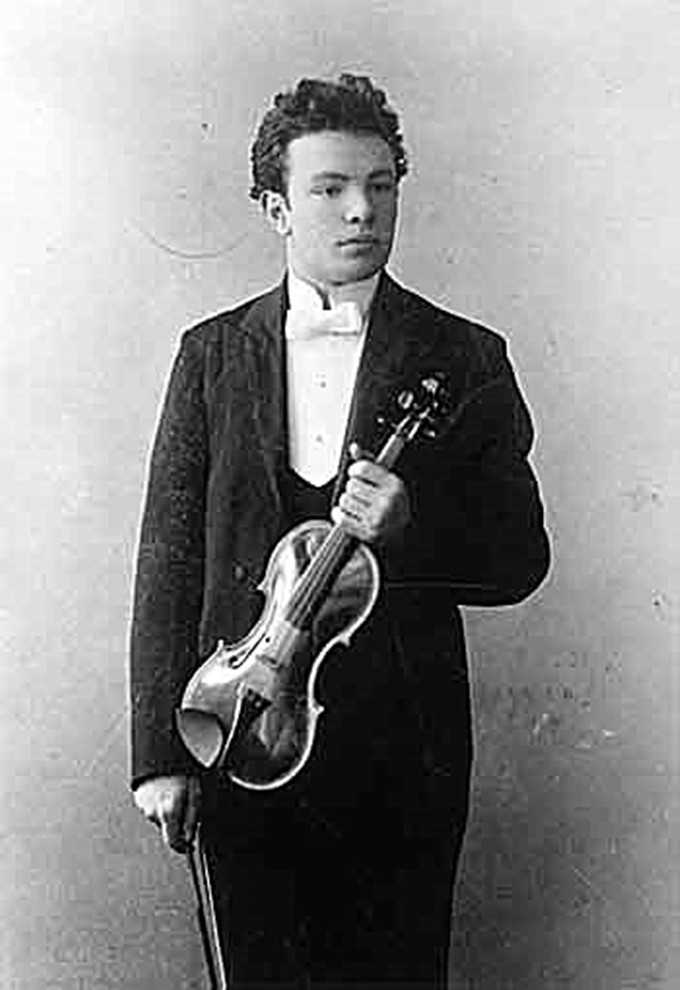 |
|
| |
年轻的奥托里诺·雷斯庇基(Ottorino
Respighi ) |
|
|
|
| |
奥托利诺·雷斯皮基是意大利小提琴家、作曲家和音乐学家,在20世纪初成为意大利主要作曲家之一。
在雷斯皮基最著名的作品中有他的三首交响诗、罗马喷泉、罗马松树和罗马节日,它们展示了丰富的管弦乐色彩,给他带来了国际声誉。
他对16、17和18世纪音乐的音乐兴趣使他根据这些时期的音乐创作作品。 |
|
|
|
| |
Ottorino Respighi
Violinist
Ottorino Respighi was an Italian violinist, composer, and musicologist
who became one of the leading Italian composers in the early 20th
century. Among Respighi's best known works are his three symphonic
poems, Fountains of Rome, Pines of Rome, and Roman Festivals, which
displayed rich orchestral colours and brought him international fame.
His musicological interest in 16th-, 17th- and 18th-century music led
him to compose pieces based on the music of these periods. |
|
|
|
| |
|
|
|
|
| |
Today in the
history of music
Ottorion Respighi, who died of cancer in Rome on April 18, 1936, at the
age of 56, was best known for his orchestral works on the theme of the
city's pine forests.
Ottoriano Respighi (Ottorion Respighi, 1879-1936) was an Italian
instrumentalist and composer.He was born in bologna on July 9,
1879.Lespigi's musical genius was inherited directly from his father,
who was not only good at playing the piano, but had given him music
lessons himself from an early age.In 1891, lespigi went to bologna music
school to study violin and viola, where he stayed for eight years.After
graduation, he came to Russia to learn composition and orchestration
from Russian music master rimsky-korsakov.After leaving Petersburg,
lespigge returned to Berlin, then the art capital of Europe.He felt a
strong cultural atmosphere there, and his music level has been greatly
improved.At first he played mainly violin and piano in these
places.Gradually, he also began to try to compose music.His works such
as piano concerto, king anzo and semirama established his reputation as
an excellent composer.
In 1913, lespigi moved to Rome, where he lived until his death on April
18, 1936.
Lespighi was employed in Rome as a professor of composition at the
saint-cicilli school of music, and in 1924 became its director, but
resigned two years later to become a professor of composition.The period
of lespigi's settlement in Rome was his heyday, and it was during this
period that he completed some of his most representative
symphonies.These works were created by the composer inspired by the
beautiful ancient city with a glorious history -- Rome. They vividly
depict the customs of Rome from different angles.
Lespigi's music creation abandoned some progressive principles of
Italian classical opera and pursued "pure instrumental doctrine".He
strove to restore ancient ways in musical form and deliberately imitated
the melody and mode and genre of the middle ages.He did not want to
dissociate himself from the past, as many contemporary composers do.Most
of his work, including his own highly rated ones, is rooted in the past.
In addition to his famous symphonic poems, lespigi composed a variety of
orchestral works including eight operas, two ballets and some concertos
and suites.Lespigi also wrote a number of vocal and chamber music works,
in addition, he wrote a religious mystery play "maria egziaka."
One of the most important characteristics of lespigi's composition is
the combination of traditional musical technique and modern tendency.His
works are interwoven with a variety of creative techniques, including
classical elements, romantic title music techniques, impressionism,
expressionism and neoclassicism.It seems that it is this method of
composition, which combines the essence of preparation, that makes
lespigi occupy an important position in the music stage.
Video of the day: 1. Albena danarova playing lespici's "gregorio
concerto"; 2.Dema slobodinuk conducts the galicia youth symphony
orchestra in lespicchi's "the pine forests of Rome." |
|
|
|
| |
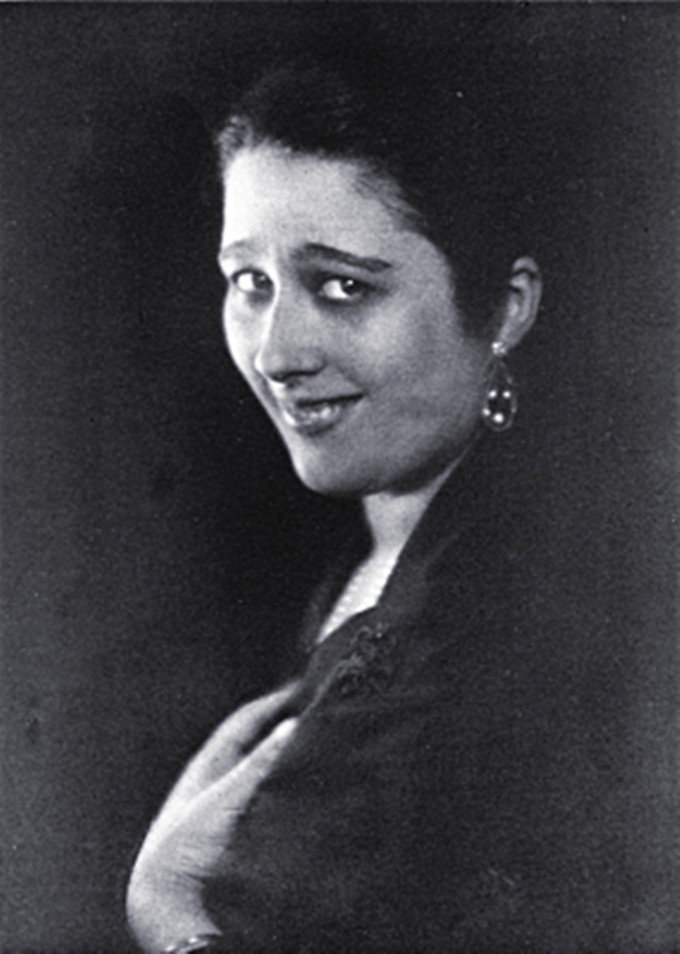 |
|
|
|
| |
奥托里诺·雷斯庇基
的夫人艾尔莎·雷斯庇基(Elsa
Respighi ) |
|
|
|
| |
是一名歌手(女中音),也是一名作曲家,她用雷斯皮基古老的乐曲和舞蹈组曲创作了芭蕾舞剧,并于1937年完成了他的最后一部歌剧《卢克雷齐亚》。在她漫长的一生中,她始终支持她丈夫的工作。1955年,她写了一本回忆录,记录了她与20世纪早期一些最有影响力的文化人物的遭遇。她还在1962年出版了雷斯比吉的传记。
1969年,她在威尼斯的Fondazione Giorgio Cini建立了Fondo
Respighi,以促进意大利的音乐教育。她也是1979年Respighi百年庆典的先锋人物,在庆典上,许多长期被忽视的作品得以首次上演并被记录下来。从那时起,她的几部作品,主要是为独奏伴唱,已经进行了他们的首演。 |
|
|
|
| |
A
singer (mezzo-soprano) and composer herself, Elsa Respighi
created ballets out of Respighi's Ancient Airs and Dances suites
and completed his final opera Lucrezia in 1937. Throughout her
long life she championed her husband's work unfailingly. In 1955
she produced a memoir of her encounters with some of the most
influential cultural figures of the early twentieth century. She
also published a biography of Respighi in 1962.
In 1969 she established Fondo Respighi at the Fondazione Giorgio
Cini in Venice, to promote music education in Italy. She was
also at the forefront of the 1979 Respighi Centenary
celebrations, which saw a number of long-neglected works
performed and recorded for the first time.[1] Since then,
several of her own works, chiefly for solo voice with
accompaniment, have been given their premiere. |
|
|
|
| |
|
|
|
|
| |
 |
|
| |
奥托里诺·雷斯庇基和埃尔莎·雷斯庇基,在美国北部的一个海滨城市(1932年) |
|
|
|
| |
Ottorino ed Elsa
Respighi nel 1932,
a bordo di una nave per il Nord America |
|
|
|
| |
交响诗《罗马的松树》
在《罗马的喷泉》大获成功之后,雷斯庇基又按相似的体例创作了交响诗《罗马松树》和《罗马的节日》。雷斯庇基这位配器色彩大师熟练地掌握着一块既能描绘壮观的景象又能作出细致层次,有时还具有像“罗马大道上的松林”中那样表现雷霆万钧之势的神奇的调色板。
他1924年创作的《罗马的松树》于1 9 24年至1 9 2 5年的演出季在罗马的奥古斯都首次上演,
由贝纳迪诺·莫利纳里指挥。而在美国的首演则于1 9 2 6年1月1
4日在卡耐基大厅举行,由纽约爱乐乐团演奏,阿图罗·托斯卡尼尼指挥。
在总谱上,《罗马的松树》的4个乐章描述如下:
第一乐章,波尔盖塞别墅的松树。孩子们在波尔盖塞别墅的松树丛边玩耍,跳着相当于“玫瑰花环舞”的意大利舞;他们模仿着行进的兵士,玩着战争游戏。他们兴奋地叽叽喳喳,就像傍晚的燕子;他们一窝蜂地溜跑了。突然,换了另一幅场景…
第二乐章,墓地的松树。我们在墓穴入口的顶部看到松树的影子。一支忧伤的歌曲从深处冉冉升起,庄严地向四处传去,就像一首圣咏,然后又神秘地消失….
第三乐章,雅尼古伦山的松树。在空气中有一种微微的颤动。明月下雅尼古伦山的侧影隐约可见。夜莺在歌唱。
第四乐章,罗马大道上的松袜。罗马大道上的薄雾弥漫的黎明。孤独的松树守卫着带有悲剧色彩的战地。无数脚步声组成微弱而不断的节奏。古代灿烂文明的光辉景象出现在诗人的幻觉之中:小号声嘟嘟响起,执政官的军队迎着初升的朝阳向神圣的大道涌去,胜利地登上卡皮托利奈山的顶峰。 |
|
|
|
| |
Symphonic
poem the pines of Rome
After the success of the fountain of Rome, lespigi wrote
symphonic poems Roman pine and Roman festival in a similar
style.Lespighi, the master of color orchestrator, had mastered a
palette that combined grandeur with subtlety, sometimes with the
thunderous intensity of "the pine forests of the Roman
boulevard."
His 1924 pine-tree of Rome was first performed at augustus in
Rome during the season of 24-25,
Led by bernardino molinari.The American premiere took place at
Carnegie Hall on January 14, 2006, with the New York
Philharmonic orchestra and arturo toscanini conducting.
On the score, the four movements of the pine tree in Rome are
described as follows:
The first movement, pine trees in the villa boerghese.The
children played by the pine trees of the villa bolghese, and
danced the Italian equivalent of the rose-garlands dance;They
imitated marching soldiers and played war games.They chattered
excitedly, like evening swallows;They snuck off in a
swarm.Suddenly, there was another scene...
The second movement, pine trees in the cemetery.We saw the
shadow of a pine tree on top of the entrance to the tomb.A sad
song rose from the depths, passed solemnly around, like a chant,
and then mysteriously disappeared....
The third movement, the pines of the yanigulun.There was a
slight tremor in the air.The silhouette of the yanigulun
mountain was dimly visible under the moon.The nightingale is
singing.
Fourth movement: loose socks on the Roman boulevard.Misty dawn
on the Roman boulevard.Lonely pines guard the tragic
field.Countless footsteps make up a weak and constant rhythm.The
splendour of the ancient civilization is seen in the poet's
imagination: the trumpeter blares, the archon's army marches
triumphantly up the sacred high road to the summit of mount
capito linai against the rising sun.
|
|
|
|
| |
|
|
| |
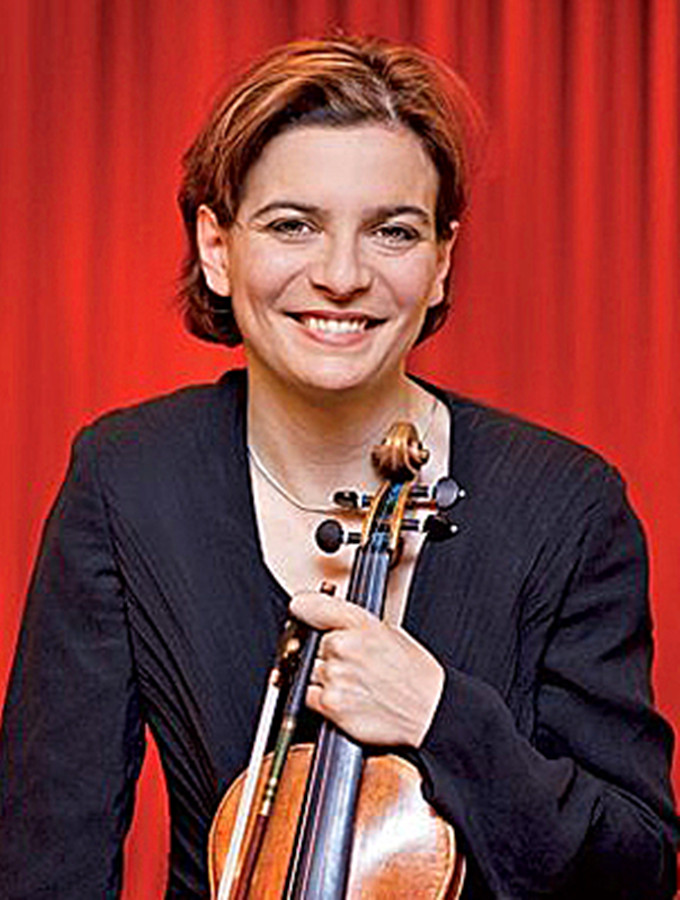 |
|
| |
|
阿尔贝纳·达纳伊洛娃(Albena
Danailova) |
|
|
|
|
| |
阿尔贝纳·达纳伊洛娃是一位最重要的小提琴家,她在索非亚长大,是一家专业音乐家:她的母亲维奥拉·波波娃是一名钢琴家,她的父亲博扬·达纳伊洛夫是一名著名的小提琴教师。
阿尔贝纳毕业的LyubomirPipkov国家音乐学院和帕乔弗拉德吉罗夫国家音乐学院在索菲亚。
她继续在德国的罗斯托克学习。
她在国内外的国际小提琴比赛中获得了一系列著名的奖项,并有丰富的经验,在慕尼黑和伦敦爱乐乐团担任巴伐利亚州歌剧的音乐会主持人。
阿尔贝纳·达纳洛娃(AlbenaDanailova)成为聚光灯下的焦点,当时她赢得了维也纳Stat
soper音乐会主持人的试镜,并成为担任这一职位的第一夫人。 4.
阿尔贝纳·达纳洛娃(Albena
Danailova)一直与保加利亚观众保持着联系。每年她都会来到保加利亚,以独奏者或室内乐团成员的身份举办音乐会。2012年初,她在索菲亚爱乐乐团担任独奏嘉宾。她与德国大提琴家亚历山大·胡尔肖夫一起演奏了勃拉姆斯的双协奏曲。音乐会结束后,阿尔贝纳·达纳洛娃对保加利亚电台说:
“我很高兴我在维也纳Statsoper管弦乐团工作了四年。一切都很好。我们的日程很紧,担任首席小提琴手是我日常工作的一部分。我试着在两者之间挤出时间做独奏或室内乐。在我们的工作中,重要的是我们的游戏方式要符合我们的个性。这是非常重要的一个整体。当我们雇佣一个新的音乐家时,正是在这个试用期,我们会发现我们是否在性格上犯了错误。”
Albena
Danailova将在帕扎尔茨克的冬季音乐之夜与小提琴演奏家的作品一起表演。她还是维恩乐团的首席小提琴手。音乐家们在勃拉姆斯音乐厅表演室内节目。2011年底,在指挥家埃米尔·塔巴科夫的指挥下,阿尔贝纳·达纳洛娃作为保加利亚国家广播电台交响乐团独奏家首次登台演出。他们演奏了贝多芬的小提琴协奏曲。 |
|
|
|
| |
Albena
Danailova, concertmaster of Vienna’s Statsoper
Albena Danai
lova is a foremost violinist who grew up in Sofia in
the family of professional musicians: her mother,
Violeta Popova, is a pianist, and her father, Boyan
Danailov, a famous violin pedagogue. Albena
graduated the Lyubomir Pipkov National School of
Music and the Pancho Vladigerov National Music
Academy in Sofia. She continued her studies in
Rostock, in Germany. She has garnered a host of
prestigious distinctions at international violin
competitions at home and abroad, and has a rich
experience as concertmaster of the Bavarian State
Opera in Munich and the London Philharmonic.
Albena Danailova came into the spotlight, when she
won an audition for concertmaster of the Statsoper
in Vienna, and became the first lady to hold the
position. She has the chance of working with world
famous musicians and conductors, such as Seiji
Ozawa, Daniel Barenboim, Lorin Maazel, etc.
Albena Danailova has maintained her connection with
the Bulgarian audience. Each year she comes to
Bulgaria and gives concerts either a soloist or as
part of a chamber ensemble. In the beginning of 2012
she guest performed as soloist of the Sofia
Philharmonic. Together with German cellist Alexander
Hulshoff she performed Brahms’ double concerto. Here
is what Albena Danailova told Radio Bulgaria after
the concert.
“I am very glad that I have been with the orchestra
of the Statsoper in Vienna for four years.
Everything goes fine. We have a busy schedule and
being a concertmaster is part of my routine. I try
to squeeze work as soloist or chamber musician
in-between. It is essential in our work that the way
we play matches our personality. And it is very
important to make an ensemble. When we hire a new
musician it is in that trial period that we find out
whether we have been wrong about the personality.”
Albena Danailova will perform at the Winter Music
Evenings in Pazardzhik with virtuoso works from the
violinist repertoire. She is also concertmaster of
the Ensemble Wien. The musicians perform a chamber
programme in the Brahms Hall of the Musikferein. At
the end of 2011 Albena Danailova performed for the
first time as soloist of the Symphony Orchestra of
the Bulgarian National Radio under the baton of
maestro Emil Tabakov. They performed Beethoven’s
violin concerto. |
|
|
|
| |
|
|
|
|
| |
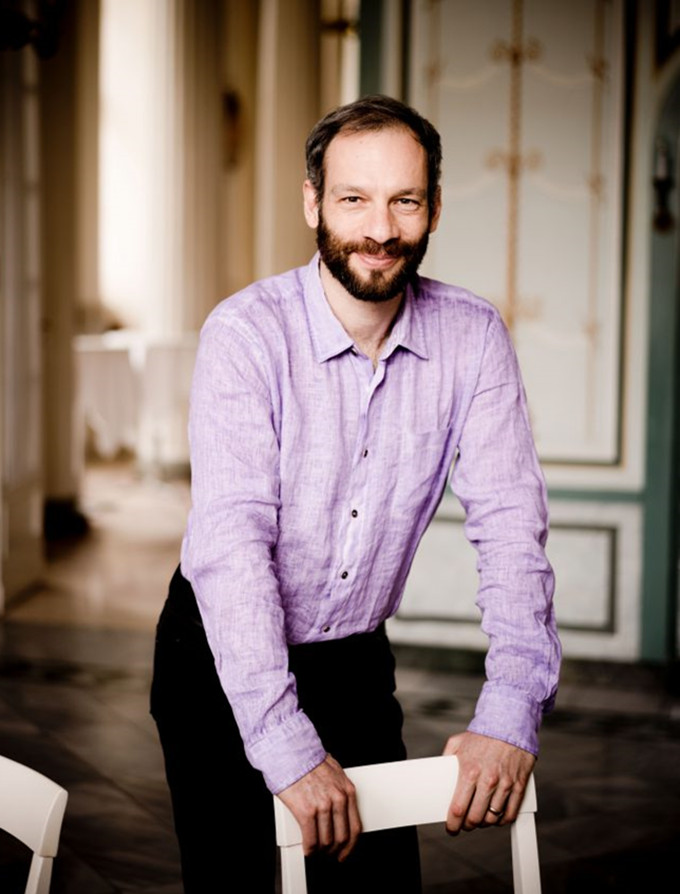 |
|
|
|
| |
迪玛·斯隆博迪努克(Dima
Slobodeniouk ) |
|
|
|
| |
称赞他深深了解和智能艺术领导下,迪玛Slobodeniouk一直从事的音乐指挥的位置Sinfonica德加利西亚自2013年以来,结合他最近的职位是校长拉赫蒂交响乐团的指挥家和艺术总监的西贝流士节日后在2016年他的任命。他将自己的俄罗斯血统与他后来的祖国芬兰的文化影响联系起来,利用了这两个国家强大的音乐遗产。他与柏林爱乐乐团、Gewandhausorchester
Leipzig、Symphonieorchester des Bayerischen
Rundfunks、伦敦爱乐乐团、伦敦交响乐团、芬兰广播交响乐团、芝加哥、休斯顿和巴尔的摩以及悉尼交响乐团合作。 |
|
|
|
| |
Lauded for his
deeply informed and intelligent artistic leadership, Dima
Slobodeniouk has held the position of Music Director of the
Orquesta Sinfónica de Galicia since 2013, which he combines with
his more recent positions as Principal Conductor of the Lahti
Symphony Orchestra and Artistic Director of the Sibelius
Festival following his appointment in 2016. Linking his native
Russian roots with the cultural influence of his later homeland
Finland, he draws on the powerful musical heritage of these two
countries. He works with orchestras such as the Berliner
Philharmoniker, Gewandhausorchester Leipzig, Symphonieorchester
des Bayerischen Rundfunks, London Philharmonic, London Symphony
Orchestra, Finnish Radio Symphony, Chicago, Houston and
Baltimore as well as Sydney Symphony Orchestras. |
|
|
|
| |
|
|
|
|
| |
迪玛·斯隆博迪努克指挥加利西亚青年交响乐团演奏雷斯庇基的《罗马的松林》 |
|
|
|
| |
奥托里诺·雷斯庇基《罗马的松林》
加利西亚青年交响乐团
迪玛·斯隆博迪努克指挥 |
|
|
|
| |
OTTORINO
RESPIGHI (1879-1936)
Pini di Roma
Orquesta Sinfónica de Galicia
Orquesta Joven de la OSG
Dima Slobodeniouk, director |
|
|
|
| |
|
|
|
|
| |
未得原作者编者授权严禁转载www.mt77.com任何内容 |
|
|
|
|
|
|
|
|
|
|
|
|
|
|


